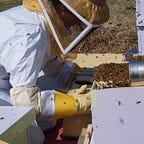Are Honey Bees Vanishing
Should We Be Concerned About the Falling Numbers of Honey Bees?
It isn’t looking too good for honey bees. Their global population is nose-diving, and there aren’t as many now as there were two decades ago. The term CCD or colony collapse disorder has worked its way into any conversation about the decline of bees. It’s always the response when someone is asked to pinpoint the cause of the dwindling numbers. Honey bees are becoming scarce for a variety of reasons. While CCD is among them, it is only one factor in a group of several that has adversely affected honey bees.
CCD has, in fact, taken a backseat in terms of problems affecting honey bees in recent years. There’s been a reduction of witnessed cases according to reports by the US EPA. What is colony collapse disorder and why does everyone keep talking about it? We shed light on this phenomenon and why bees are edging closer to the endangered list.
Understanding Colony Collapse Disorder
Around the mid-2000s, beekeepers noticed something strange. A majority of worker bees would abandon the colony, leaving the young bees and queen to fend for themselves. Reports of similar cases came in from farms across the US. Beekeepers were at a loss for words. There were no dead worker bees or signs of anything wrong with the hive. That went on for a while as researchers scrambled to figure out the weird occurrences. To date, CCD cannot be fully narrowed down to one particular trigger, although there has been speculation. Nonetheless, it remains puzzling today as it was 15 years ago.
Honey bee death and decline are often blamed on CCD, but that’s only a small part of the problem. A changing world where modernity trespasses on their natural habitat has also played a part. Poor nutrition, disease, pesticides, and parasites have also contributed to the grim statistics. We’ll breakdown these factors and how each has affected our insect friends:
Predators and parasites
Honey bees produce delicious honey that appeals to all manner of predators. Skunks, raccoons, and bears seek out the hives for honey, often destroying the colony in the process. From mammals to reptiles, amphibians, and other insects, honey bees are on the menu for plenty of species as well. Certain spiders and frogs, for example, have a sweet tooth for honey bees. They also fall prey to a variety of parasites, the varroa mite being among the most dangerous. These can easily infiltrate the hive, spreading like wildfire and infecting the colony. Once in the hive, varroa mites can infect brood cells over and over. They bring with them diseases that adversely affect honeybees.
Disease
The varroa disease, arising from the similarly named parasite, is one of the major threats facing honey bees. Another common and devastating infection includes the bacterial disease American Foulbrood that can destroy an entire brood. The varroa mite is to blame yet again for another serious threat that honeybees face: the Deformed Wing Virus.
Pesticides
A pesticide is any compound administered with the purpose of pest mitigation, repulsion, termination, or prevention. That is the definition of a pesticide according to the EPA. Many farms implore the chemical control of pests to improve production. That comes at the expense of honey bees and the environment. The plant tissue is affected and contaminated, including pollen. Insects that continually ingest harmful pollen develop a weakened immune system. The contamination also affects normal bee behavior such as foraging and communication.
Nutrition
Like humans, honey bees need a diverse diet for healthy well-being. Recent farming practices and environmental changes have limited the menu for our insect friends. Without proper nutrition, their immunity has little chance of standing up to serious diseases. One example of farming practices that have contributed to this malnutrition is monoculture. The continued growth of a single crop limits pollen diversity.
Honey bees are vanishing, and that should be a concern to not only beekeepers but everyone who shares the planet. These industrious insects participate heavily in keeping our food chain afloat, and the future certainly wouldn’t look as good without them. Help honey bees in whatever way you can, e.g. by opting for their safe live bee removal if you come across an infestation in your home or workplace. Grow a bee-friendly garden if you can. At the very least, do not bother honey bees in their natural habitat.
